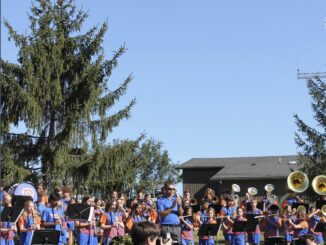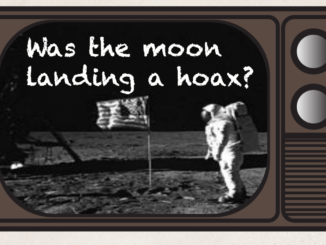
photo credit: Malak Chahboub
Ohio experienced a solar eclipse on Monday, April 8. The solar eclipse has been the second solar eclipse in the last seven years, the last one being in 2017.
However, this year’s eclipse was vastly different than the one in 2017. The 2017 eclipse was a partial solar eclipse. In contrast, the solar eclipse recently experienced was a total solar eclipse that, according to Science Teacher Patrick Daugherty, is when the moon positions itself in front of the sunlight, blocking out the sun.
During totality, everything was slightly darker, and according to sophomore Evelyne Genovesi, she could see the moon, with what looked like a ring around it. The eclipse entered the United States through Texas, going northeast, before concluding at the coast of Canada, according to The New York Times.
There are multiple types of eclipses, other than just the total eclipse. “They’re lunar eclipses, solar eclipses. The one that we most recently experienced was a solar eclipse,” Daugherty said.
However, according to The New York Times, behind the enjoyment of viewing the solar eclipse, one must take the proper safety precautions in viewing the eclipse. Staring at the sun without any solar eclipse glasses could cause permanent damage to the eyes, and people can’t even feel it happen since the retinas don’t have pain receptors.
According to NASA, the human eye can’t view the eclipse through an optical lens while wearing glasses either, so everyone needed to purchase special lenses. The glasses had to be certified, with an ISO 12312-2 somewhere on the glasses, for them to be effective, according to CNN.
For the residents of Ohio, Cleveland was a hotspot for watching the eclipse because, according to 10TV, Cleveland was one of the best places in Ohio to view the eclipse. This is because the totality lasted from 3:13 to 3:17 p.m., maxing at four minutes. The residents of Lewis Center were on the line of totality and experienced a minute and 49 seconds of totality.
Many people also traveled around Ohio to get a better view of the eclipse and longer totality times. Daugherty was one of them.
“I went to Tiffin I had a bunch of family in Tiffin. We had a big family reunion, and it was awesome,” Daugherty said.
Others stayed close to home, like juniors Salma Sajith and Holika Sri Bommidi. Bommidi watched the eclipse from her backyard, surrounded by her family. Sajith watched the eclipse in her neighborhood school parking lot, with her family and friends.
This eclipse was an enjoyable experience for many people. “I loved it and hoped to see it in the future again,” Genovesi said.
The next eclipse in Ohio, according to Daugherty, will be in 2099, but the next eclipse for the United States will be in 2042.
The eclipse was a greatly enjoyable experience for people around the country, and many schools got the day off to view the eclipse. Many people traveled and even hosted eclipse watch parties. It was the second solar eclipse to occur in the last seven years and won’t occur again in the next decade.


